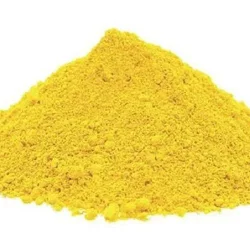Common organic pigments used in plastics
2024-03-12
Organic pigments are commonly used in the formulation of plastic products to provide vibrant colors. These pigments are derived from organic compounds and offer a wide range of hues suitable for various plastic applications. Here are some common organic pigments used in plastics:
1. Phthalocyanine Pigments:
- Phthalocyanine pigments are versatile and widely used in plastics. They offer excellent color strength, lightfastness, and chemical resistance. Phthalocyanine Blue and Phthalocyanine Green are examples of these pigments.
2. Azo Pigments:
- Azo pigments are a large group of synthetic organic pigments that provide a broad spectrum of colors, including yellows, oranges, and reds. They are known for their bright and intense hues. Examples include Pigment Yellow 1, Pigment Orange 13, and Pigment Red 170.
3. Quinacridone Pigments:
- Quinacridone pigments are valued for their high transparency, color intensity, and lightfastness. They are commonly used in plastics, offering a range of colors. Quinacridone Magenta and Quinacridone Violet are examples.
4. Dioxazine Pigments:
- Dioxazine pigments, known for their deep violet and purple shades, are used in plastics for their excellent lightfastness and durability. Dioxazine Violet is a common example.
5. Isoindolinone and Benzimidazolone Pigments:
- These pigments provide a variety of yellow to red shades with good lightfastness and color strength. They are suitable for plastic applications, including packaging and consumer goods. Examples include Pigment Yellow 110 and Pigment Red 122.
6. Perylene and Perinone Pigments:
- Perylene and perinone pigments offer high-performance properties, providing rich reds and oranges. They are used in plastics for their resistance to fading. Perylene Red and Perinone Orange are examples.
7. Indanthrone and Anthraquinone Pigments:
- Indanthrone and anthraquinone pigments are employed in plastics to achieve deep blues and greens with good lightfastness. Indanthrone Blue and Anthraquinone Green are examples.
8. Bismuth Vanadate Pigments:
- Bismuth Vanadate pigments offer bright and high-opacity yellow shades, making them suitable for plastics. They are valued for their color strength and durability. Bismuth Vanadate Yellow is a common example.
9. Metal Complex Pigments:
- Metal complex pigments, consisting of metal-chelated organic compounds, provide various colors with good lightfastness. They are used in plastics for their vibrant shades. Examples include Phthalo Blue (Green Shade) and Phthalo Green (Blue Shade).
10. Fluorescent Pigments:
- Fluorescent pigments are used to achieve bright, intense colors that emit light under UV or blacklight. They are commonly employed in plastics for safety and visibility purposes.
When selecting organic pigments for plastics, factors such as color stability, resistance to heat and light, and compatibility with the plastic resin must be considered. The specific requirements of the plastic application, whether it's packaging, automotive parts, toys, or other products, will influence the choice of organic pigments for achieving the desired color and performance characteristics.



